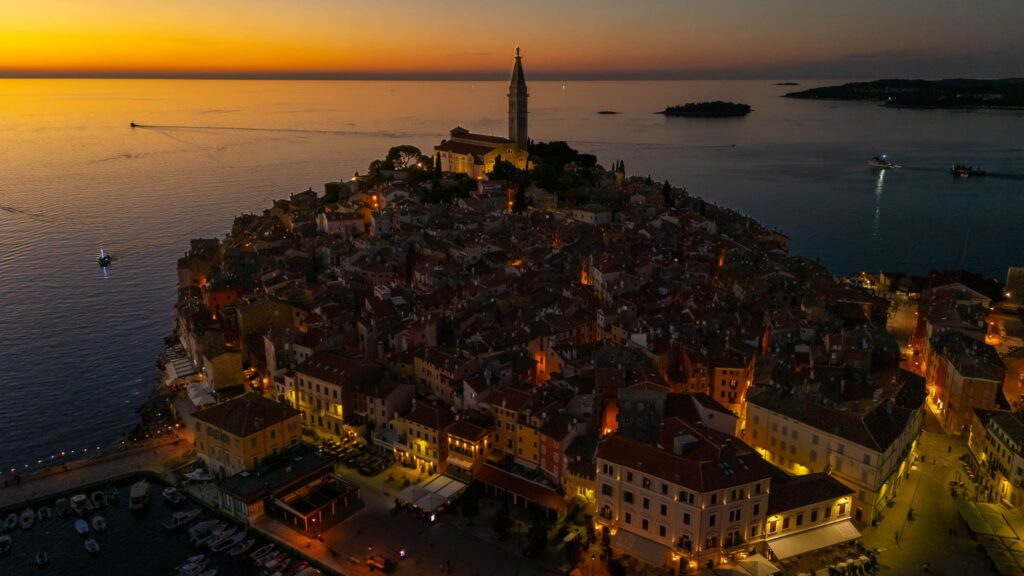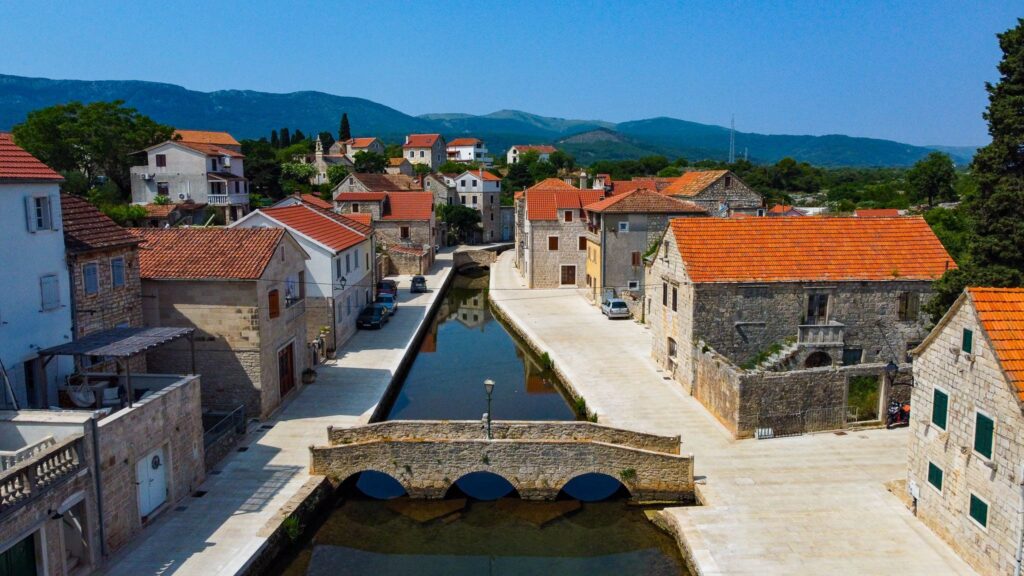Peka in Hvar: A Local Tradition in a Lost World
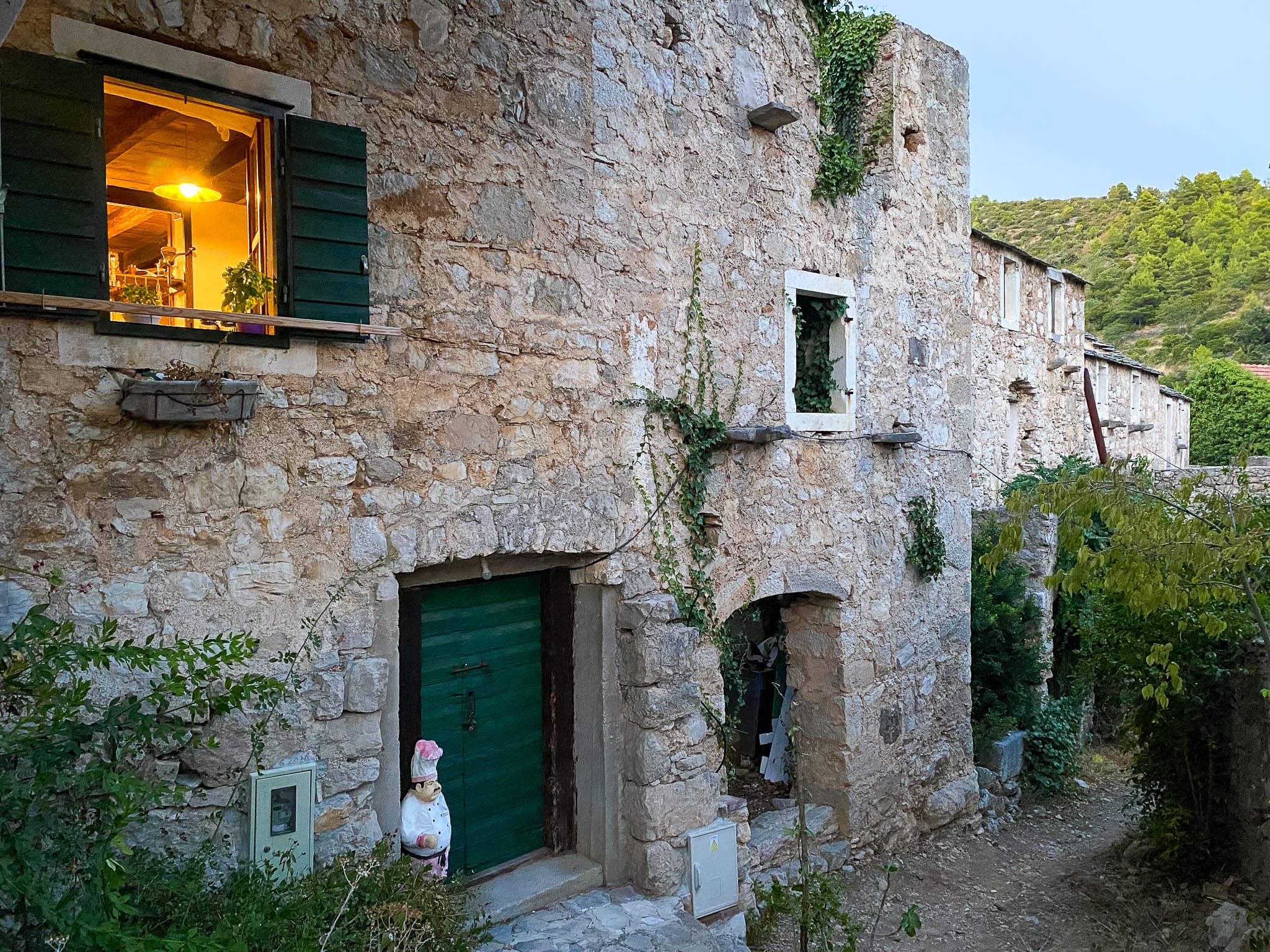
If there’s one dish that captures the soul of Dalmatian cuisine, it’s Peka. Traditionally made with octopus, potatoes, and vegetables slow-cooked under a metal bell covered in embers, Peka is more than just a meal—it’s an experience rooted in Croatian culture and family gatherings. While I didn’t try the meat version (I’m vegetarian), I still got to enjoy delicious oven-baked vegetables, full of flavor and cooked with the same love and technique.
But what truly makes this story unique is where we had it: in an abandoned village in the middle of Hvar Island, where the only building still standing and functioning is a restaurant. It’s a surreal contrast—crumbling stone homes and overgrown paths surrounding a warm, lively kitchen still serving meals just like decades ago.
The Journey Is Half the Magic
To reach this place, you’ll need a car—public buses don’t go anywhere near the area, which makes the destination feel even more remote and special.
We started our trip from Stari Grad, and let me tell you, the adventure begins long before you reach the table. On the way to the restaurant, we made two meaningful stops that are well worth your time.
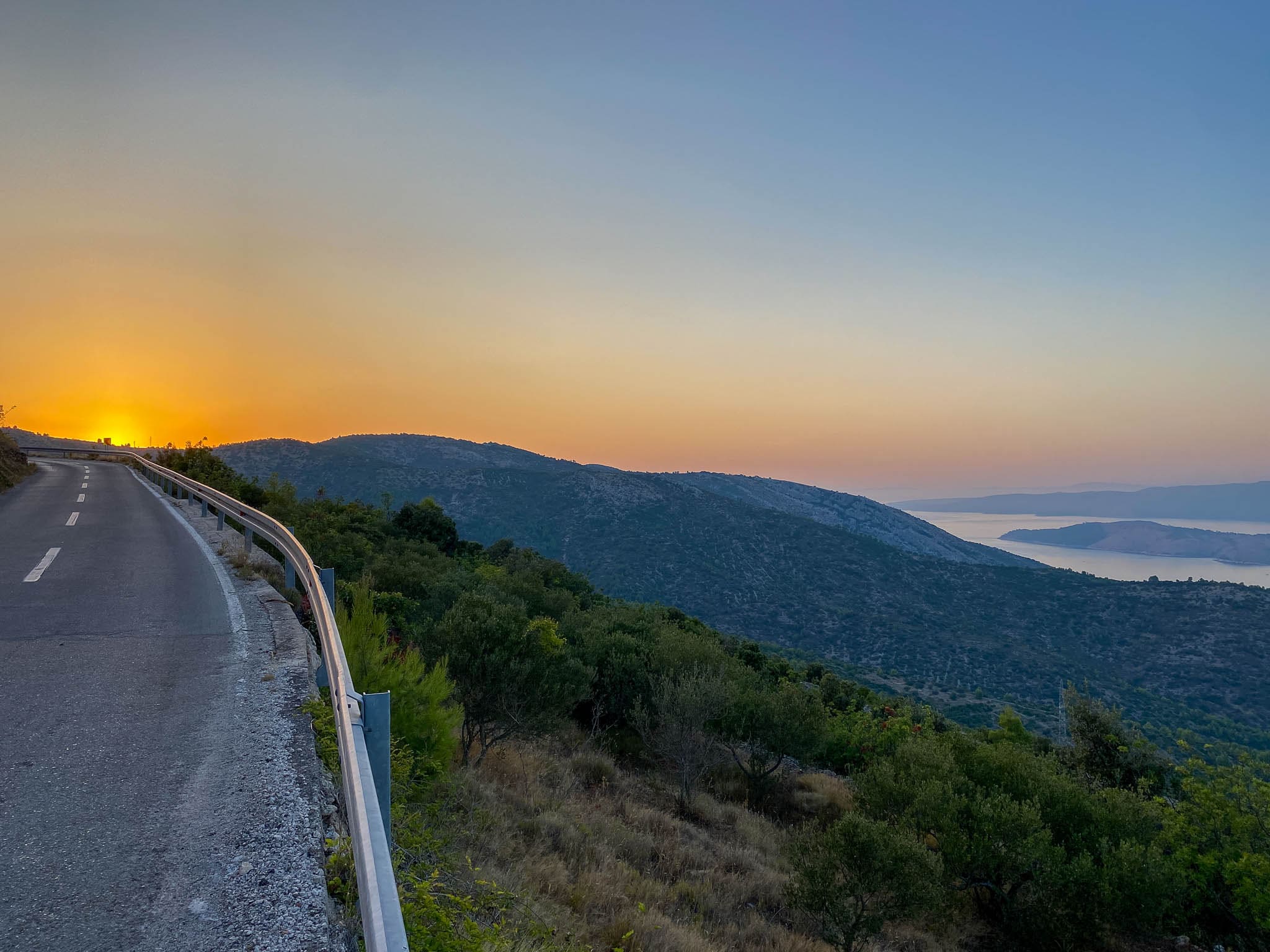
First Stop: VAPNENICA NA ROŠKARŠNIC
This spot might not be well-known to tourists, but it’s a powerful window into Hvar’s past. Here, you’ll find ancient dry-stone walls, once part of a traditional lime kiln (vapnenica). These kilns were used to burn limestone into quicklime, which was an essential material for building and agriculture. The walls you see are dry-stacked, meaning no cement or mortar was used—just skilled hands and perfectly chosen stones, a technique recognized by UNESCO as part of the intangible cultural heritage of humanity.
It’s quiet here. Peaceful. And walking among the ruins, you start to imagine the island as it was before tourism—when locals relied on hard manual labor, when villages were full of life, and when meals like Peka were cooked for family after a long day’s work.
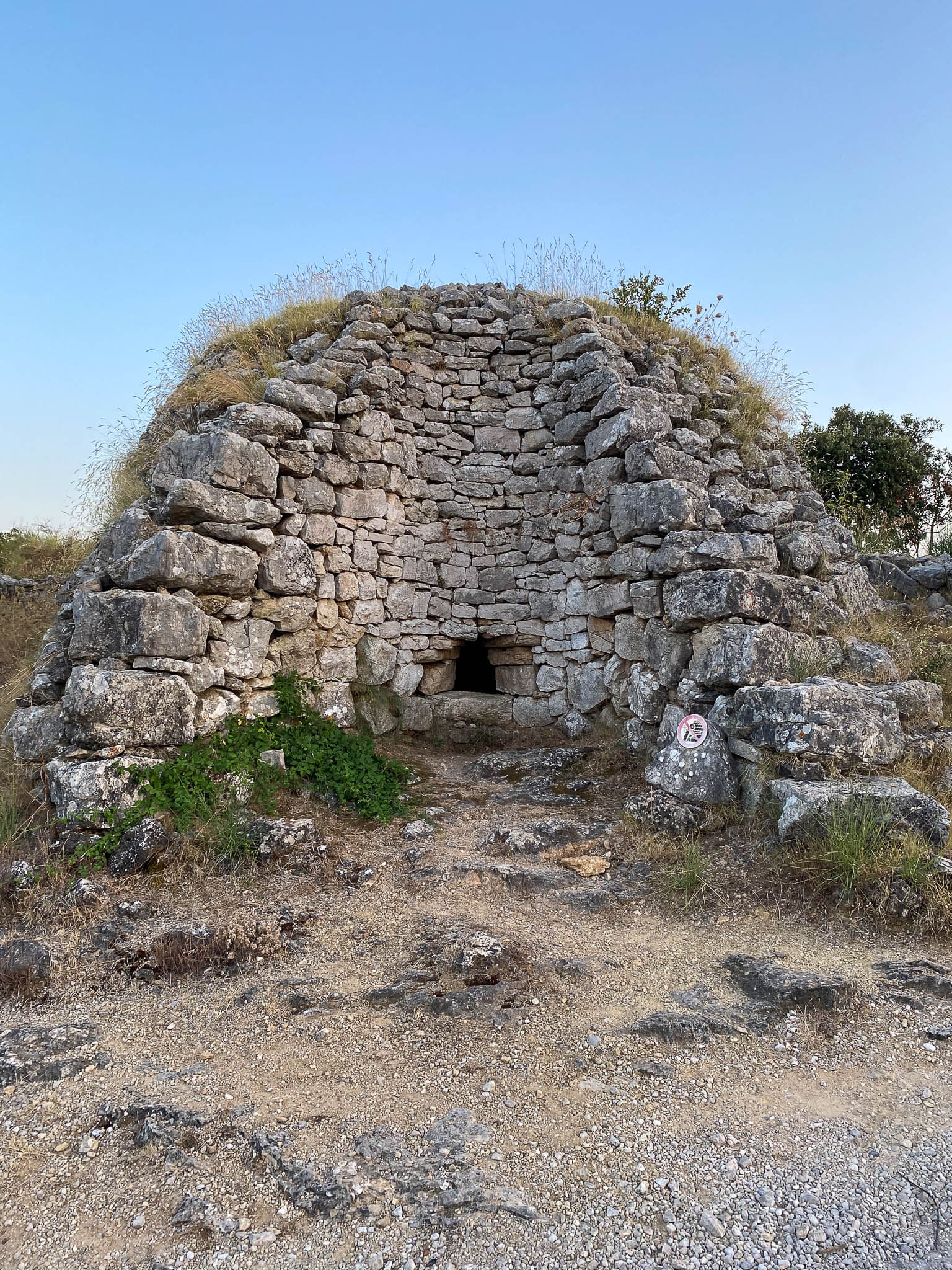
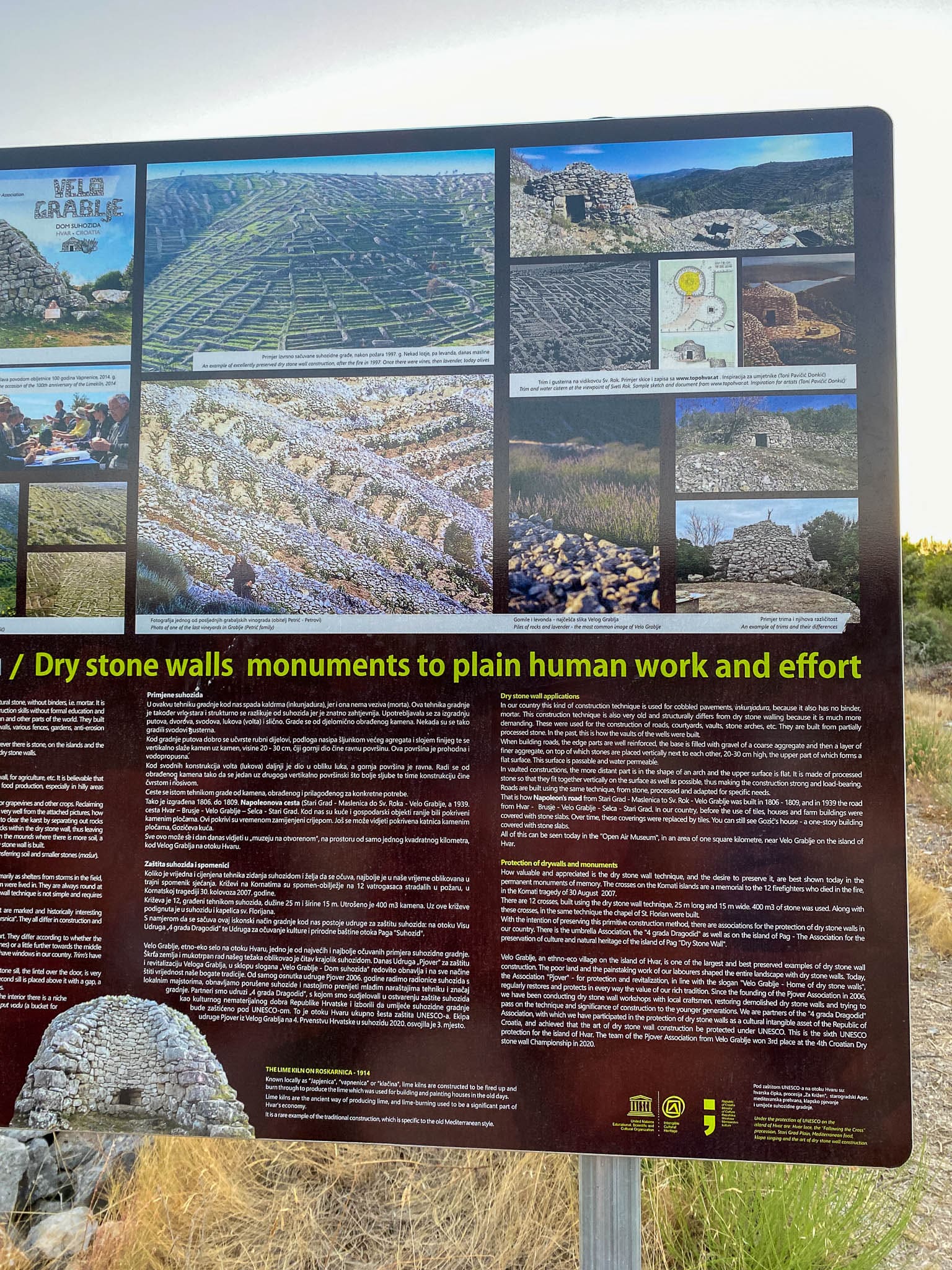
Second Stop: The Highest Point on Hvar Island
Our next stop was spontaneous, but breathtaking. We pulled over at the highest point on the island, where there’s a panoramic view of the entire Stari Grad bay and beyond. It’s one of those places where the sky meets the sea, and the vastness makes you feel wonderfully small. Perfect for a photo stop, or just to take a deep breath and soak it all in.

Arrival in Malo Grablje: A Village Frozen in Time
We finally reached Malo Grablje, a ghost village tucked in the hills of central Hvar. Once a thriving rural community, it was abandoned in the mid-20th century when its residents moved closer to the coast in search of jobs, tourism income, and easier access to services. This phenomenon isn’t rare—Hvar is dotted with abandoned villages, silent witnesses of a changing way of life.
Our driver dropped us off at the entrance of the village, agreeing to return in two hours. From there, we walked through the middle of this hauntingly beautiful stone settlement. With roofless houses and crumbling walls, narrow alleys overtaken by nature, and complete silence except for the wind, the whole scene felt almost surreal.

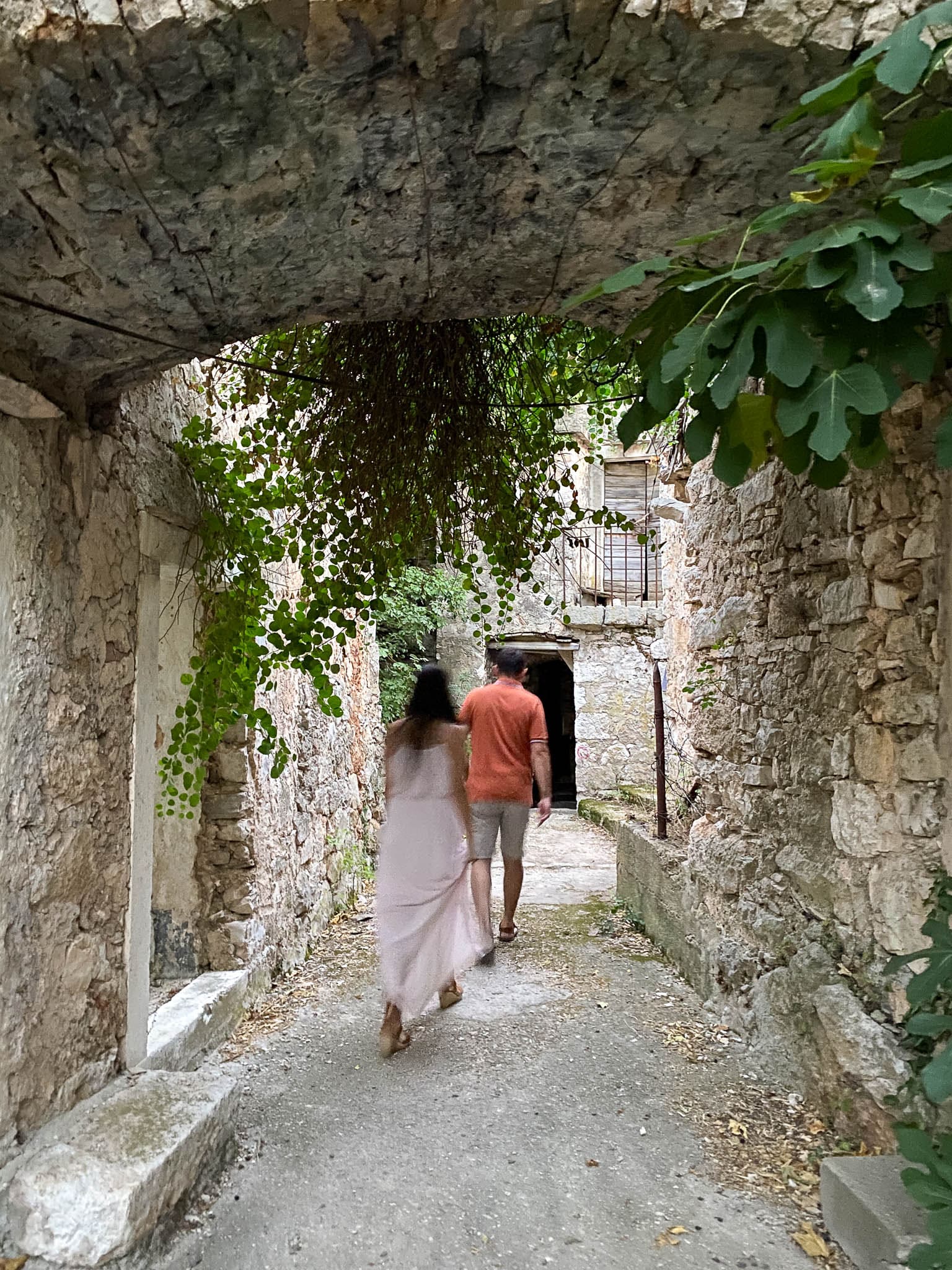
A Light at the End of the Path: Konoba Stori Komin
After wandering through the maze of old paths and stone ruins, we finally saw a warm light glowing at the end of a small uphill trail. It was Konoba Stori Komin, the only functioning place in the village—and what a place it is.


This family-run konoba (tavern) serves traditional Dalmatian food in an intimate, mountain-view setting, with only a few tables, each lit by a soft, golden glow. Reservations are absolutely necessary, as Peka takes hours to prepare and they only cook what has been ordered in advance. Here is the number to make a Reservation: 0915276408.
Although I didn’t try the octopus Peka, I was served a beautiful plate of oven-roasted vegetables, rich in flavor, rustic, and satisfying. My friends, who did try the Peka, absolutely loved it—tender, smoky, and cooked to perfection.
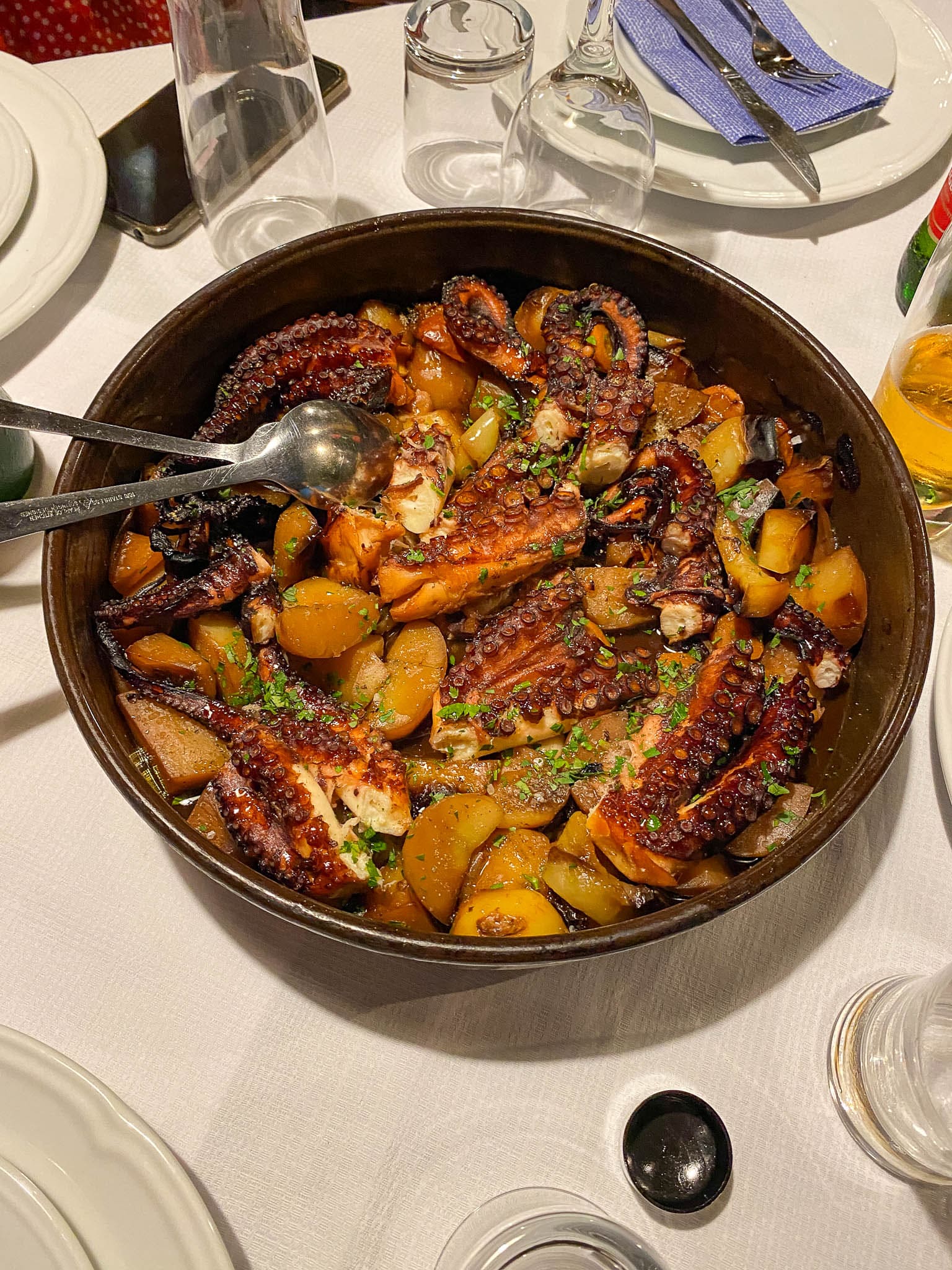
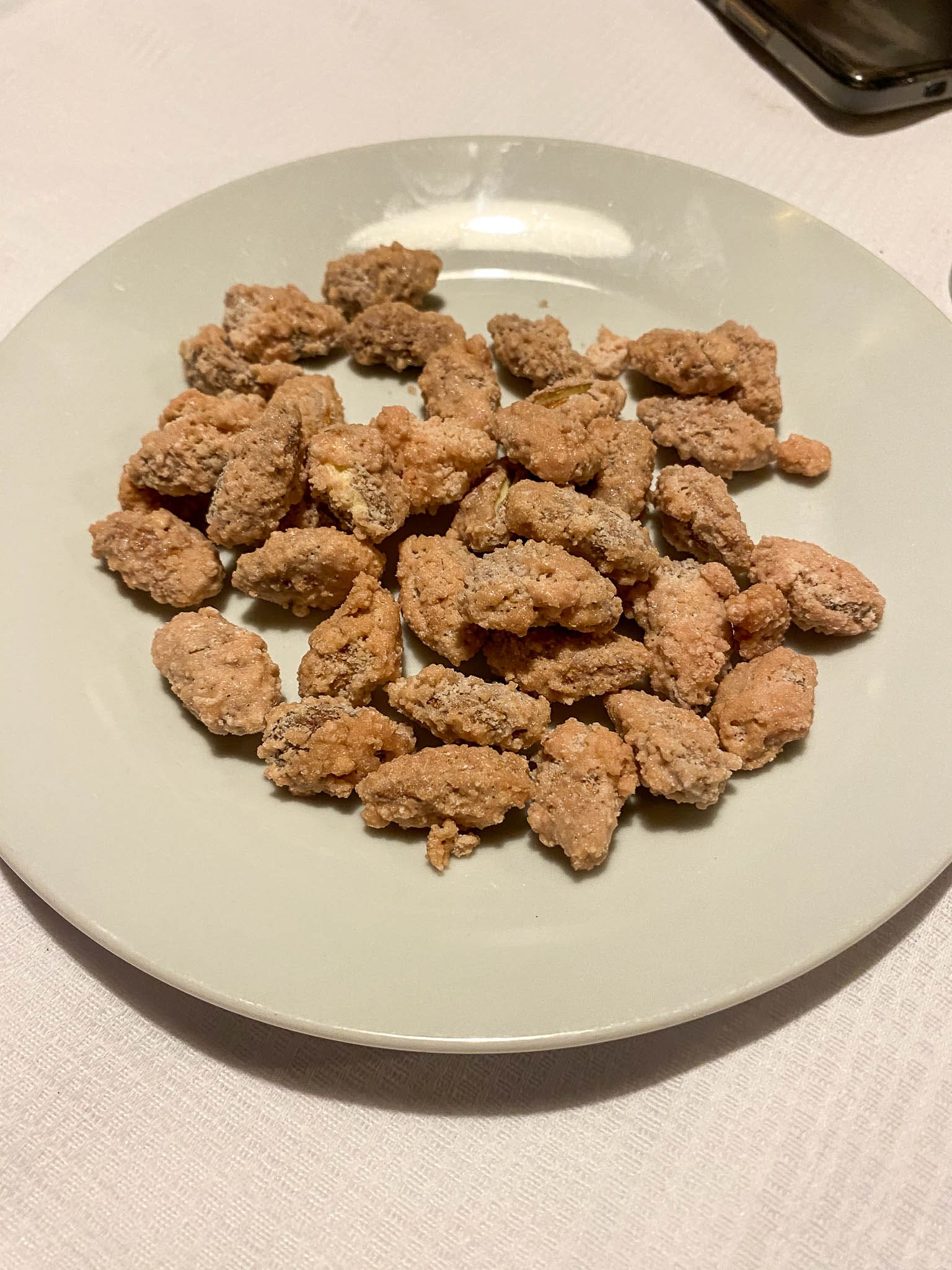
As if the experience wasn’t already special enough, at the end of the meal the owners surprised us with a complimentary traditional dessert: caramelized peanuts coated in crunchy sugar. It was a small gesture, but it felt like the perfect way to end a truly magical evening.
Practical Tips for Visiting Konoba Stori Komin
If you’re tempted to live this unforgettable dining experience, here are a few things to keep in mind:
- You need a car to reach Malo Grablje. The village is not serviced by public transport, so either rent a car or hire a taxi/remis and arrange your return trip in advance.
- The village is close to the coastal town of Milna, but we recommend driving from Stari Grad, especially if you want to make the scenic stops along the way.
- Take your time on the road—make a stop at the lime kiln ruins (Vapnenica na Roškarsnicu) and at the island’s highest viewpoint, where you’ll get stunning views over the bay of Stari Grad.
- Reservations at Konoba Stori Komin are essential. They don’t accept walk-ins because Peka requires several hours to prepare, and they cook it based on reservations only. You can contact them through their Instagram or by phone (search “Konoba Stori Komin” online for current info).
- Let them know in advance if you’re vegetarian. They were kind enough to prepare an amazing vegetarian alternative with oven-roasted seasonal vegetables.
- Bring a flashlight or keep your phone charged—the walk through the abandoned village is atmospheric but can get quite dark at night.
- Plan to stay at least two hours, not just for the meal, but to soak in the surroundings. The setting, the silence, and the food deserve to be enjoyed slowly.
I hope you guys enjoy the experience and try it yourself. If you are spending a more days in Hvar you can check my page with more posts HERE.

